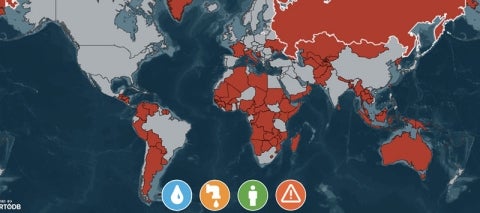Note: Yale School of the Environment (YSE) was formerly known as the Yale School of Forestry & Environmental Studies (F&ES). News articles and events posted prior to July 1, 2020 refer to the School's name at that time.
Yale Project Needs Your Wastewater Data
In 2014, the F&ES-based Environmental Performance Index (EPI) project members created a first-of-kind indicator on national-level wastewater treatment. They devoted an enormous amount of resources and staff time to sifting through a wide variety of data sources. But it was just a start. They hope a new interactive map to crowdsource expert feedback will help refine and improve this important indicator of both ecosystem and human health — and they need your help.

